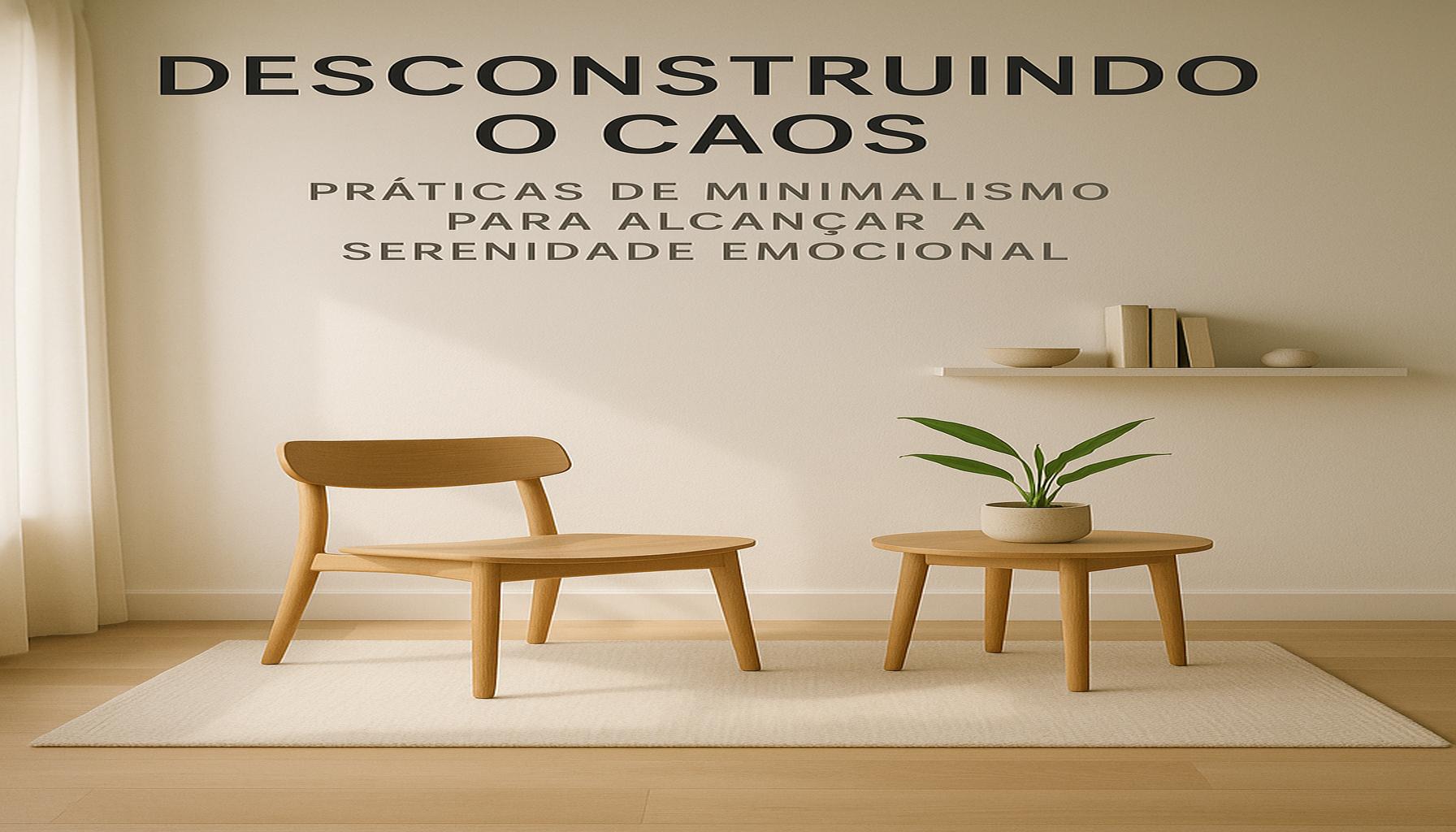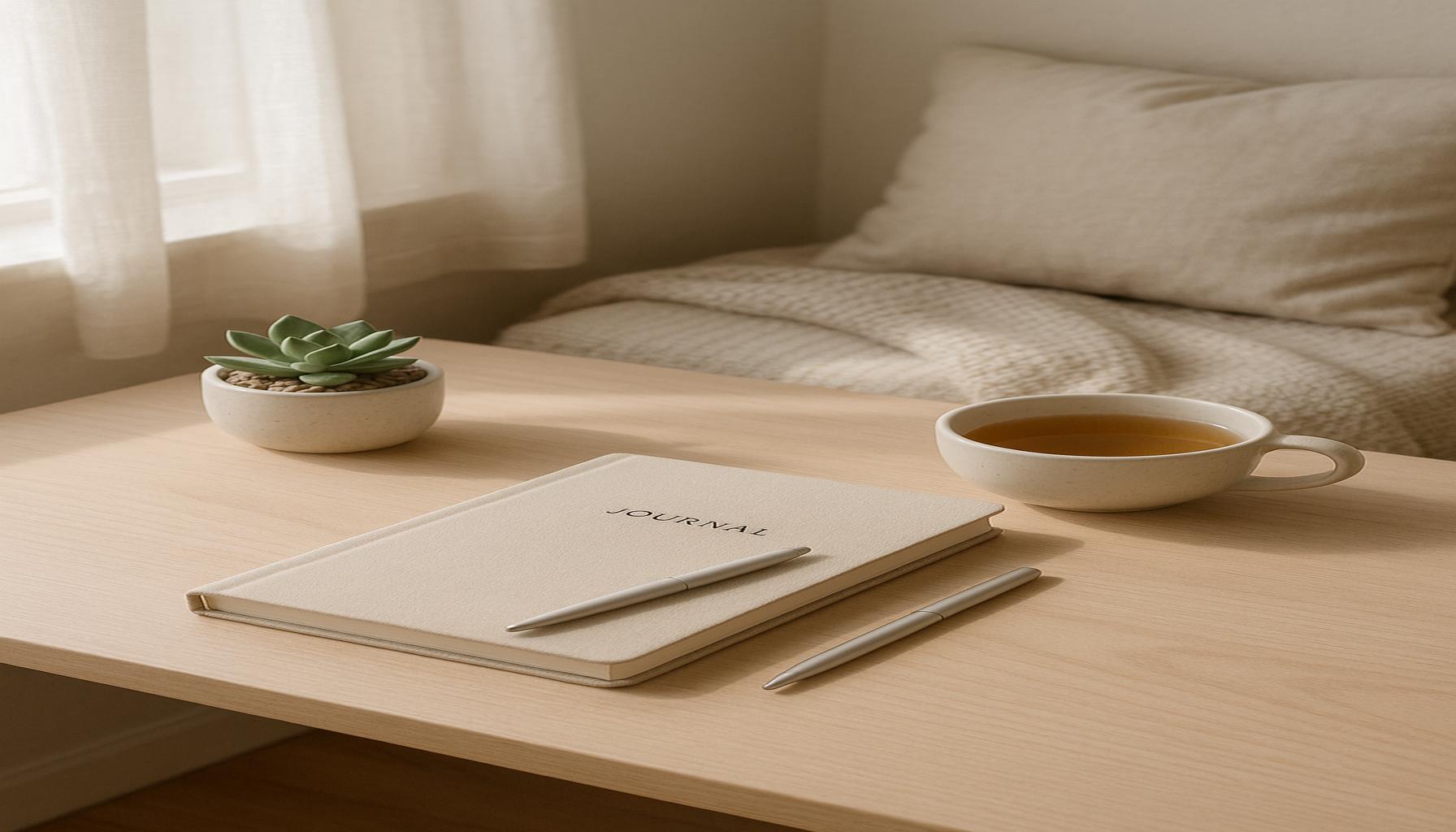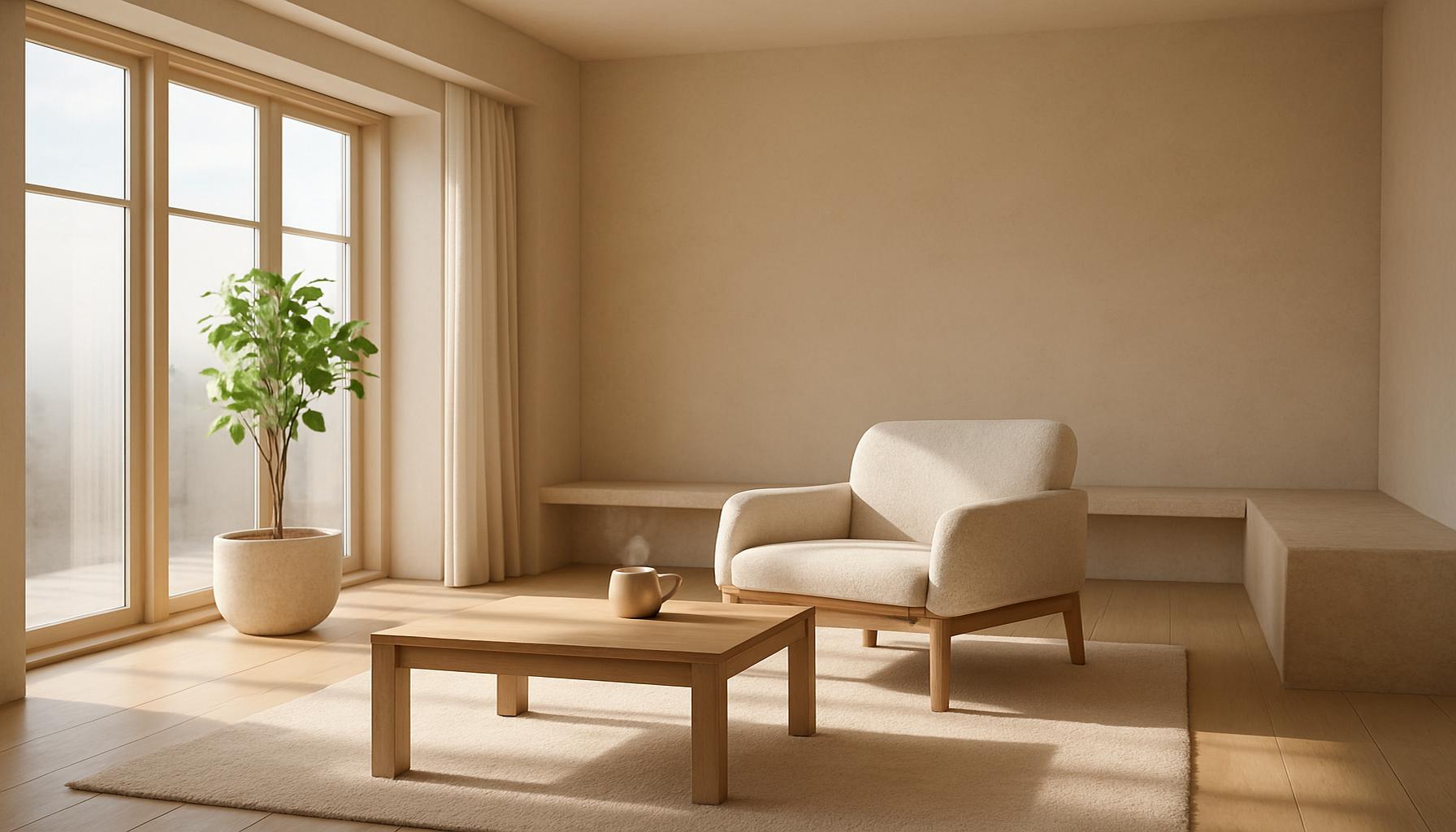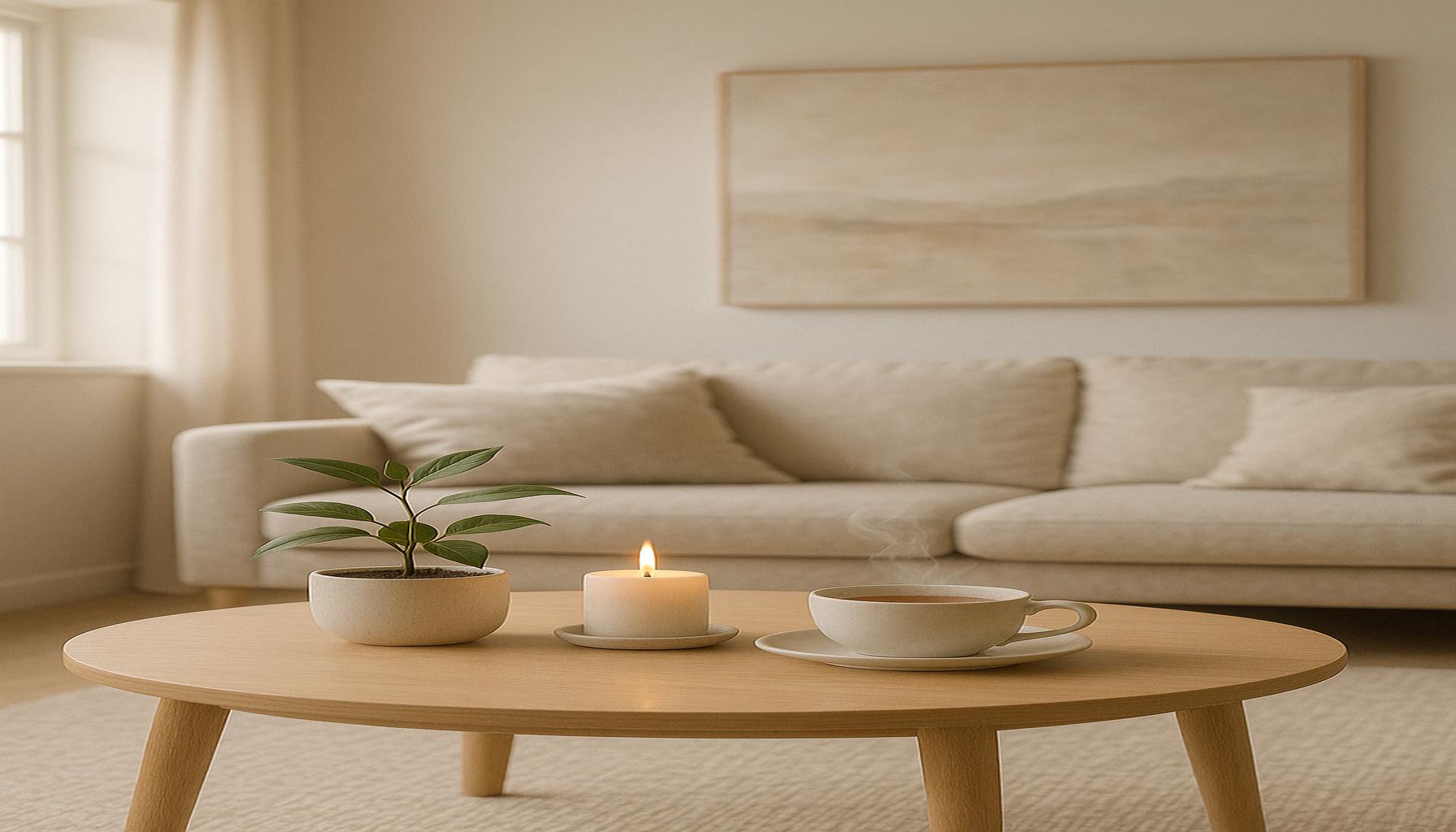Deconstructing Chaos: Minimalism Practices to Achieve Emotional Serenity

Finding Clarity in a Cluttered World
In today’s fast-paced society, chaos often feels like an uninvited guest in our lives. Balancing work, family, and personal interests can lead to overwhelming stress and emotional fatigue. Many are now turning to minimalism practices as a potential solution for regaining control over their environment and, subsequently, their mental state.
What is Minimalism?
At its core, minimalism is about embracing simplicity. It encourages individuals to:
- Reduce physical clutter
- Streamline their commitments
- Cultivate a more intentional lifestyle
This lifestyle choice aims to cut through the noise, paving the way for emotional serenity. Minimalism is not just about having less; it’s about making space for what truly matters. Whether you live in a bustling city like New York or a quieter town, the principles of minimalism can be tailored to fit any living situation. But how does one start deconstructing chaos effectively?
Benefits of Embracing Minimalism
Adopting minimalism practices can lead to profound changes in your emotional well-being. Some notable benefits include:
- Increased focus and productivity: With fewer distractions, you can hone in on tasks that matter most, whether that is at your job or during personal projects. Studies show that decluttering your workspace can increase efficiency and creativity.
- Reduced anxiety and stress levels: A cluttered environment can often lead to a cluttered mind. By reducing the number of possessions and commitments, individuals report feeling lighter and more at peace.
- Enhanced clarity in decision-making: The more choices we have, the harder it can be to make decisions. Minimizing options helps clarify what is most meaningful and necessary in one’s life.
As you explore the principles of minimalism, you’ll discover practical steps to untangle your life from chaos. From organizing your living spaces to evaluating your commitments, this journey not only promises a more organized environment but also a path towards achieving genuine emotional calm.

Consider starting with a simple challenge—dedicate just a weekend to decluttering one room or even a small area, like a closet or desk. You might be surprised at how liberating it can feel to let go of items that no longer serve you. As you incorporate minimalism into your life, you may find that it opens up more time for hobbies, relationships, and activities that truly bring you joy.
Embracing minimalism is not merely about material possessions; it’s about living with intention and purpose. Ultimately, in a world filled with distractions, such a lifestyle serves as a compass guiding you back to what truly matters.
DISCOVER MORE: Click here to delve into the significance of intentionality in minimalist design
Decluttering Your Physical Space
The journey into minimalism begins with a fundamental step: decluttering your physical environment. This process not only clears out physical belongings, but it also clears the mind, allowing for a more serene atmosphere. A study conducted by the American Psychological Association emphasizes the correlation between cluttered spaces and feelings of stress, as an unorganized environment can drain mental energy and hinder productivity. Thus, removing items that no longer serve a purpose can dramatically shift the emotional landscape of your life.
Strategies for Effective Decluttering
When embarking on a decluttering mission, employing effective strategies can make the process both manageable and rewarding. Here are some actionable tips to kickstart your minimalism journey:
- The “One-Year Rule”: If you haven’t used an item in the past year, consider letting it go. This rule helps distinguish between true necessities and items that merely occupy space.
- Sort by Category: Instead of decluttering room by room, try sorting items by category—such as clothing, books, and kitchenware. This approach often brings to light the extent of clutter across your entire home.
- Tackle Small Areas: Start with small, manageable spaces like a drawer or a single shelf. Completing these smaller projects can provide an immediate sense of accomplishment and motivate you to tackle larger areas.
- Set Time Limits: Allocate specific time blocks dedicated to decluttering. This can prevent the process from feeling overwhelming, turning it into a scheduled task rather than a never-ending chore.
As you methodically declutter, take a moment to reflect on each item. Ask yourself if it adds value to your life or contributes to your emotional well-being. By fostering this sense of intention, you pave the way to an environment that resonates with clarity and purpose.
The Impact of Digital Clutter
While many tend to focus on physical items, it’s equally important to address digital clutter. In an age defined by technology, our digital spaces can become as chaotic as our physical ones. Emails, unorganized files, and social media notifications inundate our daily lives, contributing to stress and distraction.
To initiate a digital declutter, consider the following steps:
- Unsubscribe: Evaluate your email subscriptions and unsubscribe from any newsletters or notifications that no longer hold your interest.
- Organize Files: Create clear folders and sub-folders on your devices to make essential information easily accessible. Organizing files reduces the mental load tied to searching for important documents.
- Limit Social Media: Evaluate your social media accounts and consider unfollowing pages or individuals that drain your energy or contribute to negativity.
By embracing both physical and digital decluttering, you begin to forge a path towards a more intentional life. As you create space, you’re not merely emptying your surroundings; you are making room for opportunities, connections, and peace of mind. The process may seem daunting, but each step taken toward minimalism is a step toward achieving emotional serenity.
| Category | Benefits |
|---|---|
| Clarity and Focus | Minimalism encourages individuals to declutter both physically and mentally, leading to enhanced clarity and improved focus on essential tasks. |
| Emotional Serenity | By reducing distractions and simplifying choices, minimalism fosters a state of emotional serenity, allowing for a more peaceful and fulfilling life. |
| Self-Reflection | Embracing minimalism paves the way for deeper self-reflection, enabling individuals to understand their wants and needs better, ultimately leading to personal growth. |
| Better Decision-Making | A minimalist lifestyle simplifies decision-making processes, as an individual is less burdened by choices and more equipped to attain clarity in their judgments. |
The practices associated with minimalism do not merely focus on the reduction of physical items but extend into various aspects of life, that are often clouded by excess. This newly embraced perspective encourages a holistic approach to emotional well-being. Choosing to live with less is not just about eliminating clutter; it’s a profound shift toward fostering a rich, meaningful existence rooted in intentionality, prioritizing what truly matters. As one navigates through the chaos, minimalism can become a guiding principle toward emotional resilience and serenity.
DISCOVER MORE: Click here to simplify your life
Embracing a Minimalist Mindset
While decluttering your physical and digital spaces is fundamental, the next step in achieving emotional serenity lies in embracing a minimalist mindset. It is not merely about owning fewer items but about cultivating a perspective that prioritizes quality over quantity, simplicity over complexity. The essence of minimalism is found in intentional living, where decisions are made with purpose and clarity, leading to reduced stress and increased fulfillment.
Intentionality in Everyday Choices
One of the pivotal components of a minimalist mindset is intentionality. This means being mindful about every choice, from the clothes you wear to how you spend your time. By fostering intentionality, you can prevent the overwhelm that often accompanies a busy lifestyle. For example, instead of cluttering your schedule with back-to-back commitments, consider prioritizing quality experiences. Opting for fewer engagements that truly matter can result in a more fulfilling social life.
Practicing intentionality extends beyond social commitments—the impact of intentional purchases is crucial as well. With each acquisition, ask yourself how the item will enhance your life now and in the future. This conscious shopping not only supports your decluttering efforts but also ensures that your space remains aligned with your values. Instead of succumbing to consumer culture’s pull towards excessive buying, being selective can lead to a more meaningful collection of items that genuinely resonate with your identity.
Mindfulness as a Minimalist Tool
Incorporating mindfulness into your daily life can further enhance your minimalist journey. Mindfulness practices, such as meditation and yoga, serve to stabilize and declutter the mind itself, creating a foundation for emotional serenity. By taking just a few minutes each day to focus on your breath and clear your thoughts, you create space for clarity and calmness.
Studies published in the Journal of Happiness Studies suggest that mindfulness not only helps in managing stress but also fosters a deeper appreciation for life’s simple pleasures. When you embrace mindfulness, you become more attuned to the present moment, allowing you to fully experience and savor the beauty of the world around you—an essential aspect of minimalism.
Creating a Personal Definition of Minimalism
Minimalism is not a one-size-fits-all approach; it’s essential to create a personal definition that resonates with your values and lifestyle. Consider what minimalism means to you. Is it having fewer possessions, or perhaps it’s about cutting out negative influences from your life? Reflecting on why minimalism matters to you can significantly deepen your commitment to changing your lifestyle.
- Visualizing Your Ideal Life: Take time to visualize what a minimalistic life means for you. What does your perfect day look like? How do your surroundings contribute to this vision?
- Setting Boundaries: Learn to say no more often. This can apply to commitments, relationships, and even social media interactions. Establish boundaries that protect your peace and focus on what truly brings you joy.
- Cultivating Gratitude: Practicing gratitude can shift your perception of abundance, allowing you to appreciate what you have rather than focusing on what you lack. Regularly jot down things you are grateful for to reinforce this mindset.
In summary, embracing a minimalist mindset is a transformative journey toward achieving emotional serenity. By fostering intentionality, incorporating mindfulness, and defining what minimalism means for you, you create a richer, more sustainable life, free from the chaos of excess. This evolution of thought leads to a simpler existence where clarity reigns, enabling deeper connections with yourself and the world around you.
DISCOVER MORE: Click here to enhance your productivity
Conclusion: Finding Peace Through Minimalism
In a world increasingly defined by excess, the pursuit of emotional serenity through minimalism emerges as a liberating journey worth embarking on. As we have explored, minimalism transcends mere decluttering; it invites individuals to cultivate a mindful approach to life that emphasizes intentionality and purpose. By consciously selecting what we allow into our lives—whether it be belongings, activities, or relationships—we can significantly lessen the chaos that often reigns in our daily routines.
Moreover, practicing mindfulness serves as a powerful tool in this endeavor, enabling us to remain grounded amid life’s challenges. Research underscores the myriad benefits of mindfulness, from stress reduction to enhanced overall well-being, reinforcing the idea that a simpler existence not only clarifies our surroundings but also nourishes our mental health.
Ultimately, the essence of minimalism lies in its adaptability to individual values and aspirations. Each person’s definition of minimalism is unique, allowing for a tailored approach that resonates with their vision for a peaceful life. By embracing this personalized perspective and committing to gratitude, we can engage with our lives more fully, appreciating the abundance already present.
As you consider integrating minimalism into your own life, reflect on your relationship with both possessions and experiences. What does emotional serenity look like for you? What clutter—both physical and emotional—can you let go of in your quest for clarity? Armed with these insights, you can begin to deconstruct chaos and open the door to a more serene, meaningful existence.


